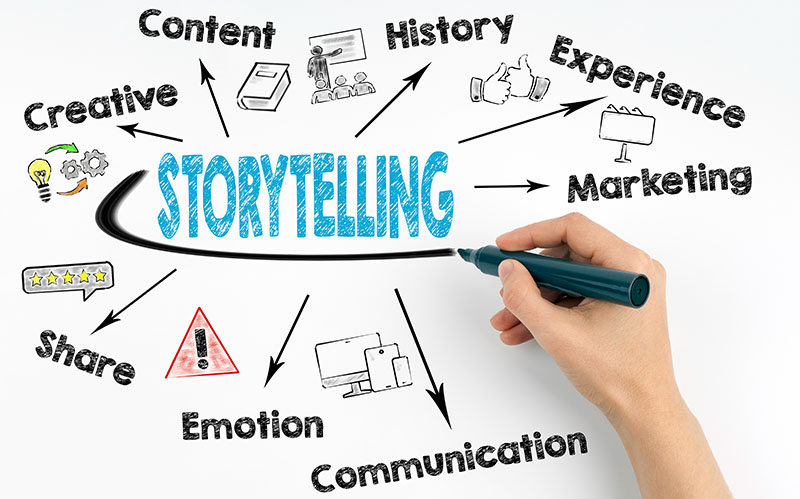How well can you tell a story? Storytelling is not just about relating past events and reciting information. Instead, you need to share information in a meaningful, engaging manner that paints a clear, vivid picture. Storytelling has become an essential element in marketing. It is the best way to explain more about your brand, your business, and your persona. Effective storytelling attracts the right audience, expands your business brand, and inspires your audience to purchase your products and services. Here we explain how to use storytelling to build your brand.
Solve Problems
Your brand can be the protagonist in your story. Presenting common problems your brand solves is an excellent way to tell your brand’s story. Don’t be afraid to discuss conflicts you’ve encountered to make your brand more vulnerable. A happy ending after consistently overcoming challenges works in your favor. Discussing your situation, the problems you set out to conquer, how you did it, and continue to do it manifests emotions and make you more real.


Flip the Hero
You can also use conflict based on your customer’s point of view. As a character in your story, your customer has a goal in mind. What is motivating them to find a service or product? What prevents them from getting a product or service? What are possible outcomes when faced with conflict? Identifying the real problems of your target allows you to zero in on logical conflicts they encounter and offer solutions. This approach allows you to tell a story, save your customer from peril, and tell why to choose your products or services.
Map Out Your Customer Journey
As your customers delve deeper into the story, you want them to be able to find the logical next chapter. But because every customer is at a different part of the story, you need to focus on creating personalized experiences. Some of the best approaches include:
- Logical destinations: Depending on where a customer is on their journey, they will need a different chapter of your story. Have they just arrived and are at the discovery/awareness stage of their trip? Have they visited a few times and could be directed to sign up for info or a demo? Have they watched the videos and maybe even placed something in their shopping cart? Your personalized destinations guide them down the path that makes the most sense for their journey.
- Simple architecture: Consider the simplest way to navigate the information on your site—to create a self-serve setup that is intuitive. It might be a hamburger menu that follows them through their visit, or you might have well-placed CTAs to make the next steps easier.
- Keeping outcomes in mind: Consider the possible outcomes at each stage of the customer’s journey. Provide the tools needed to assist them when using different types of content, such as infographics, blogs, videos, etc. Use logical CTAs for each content

